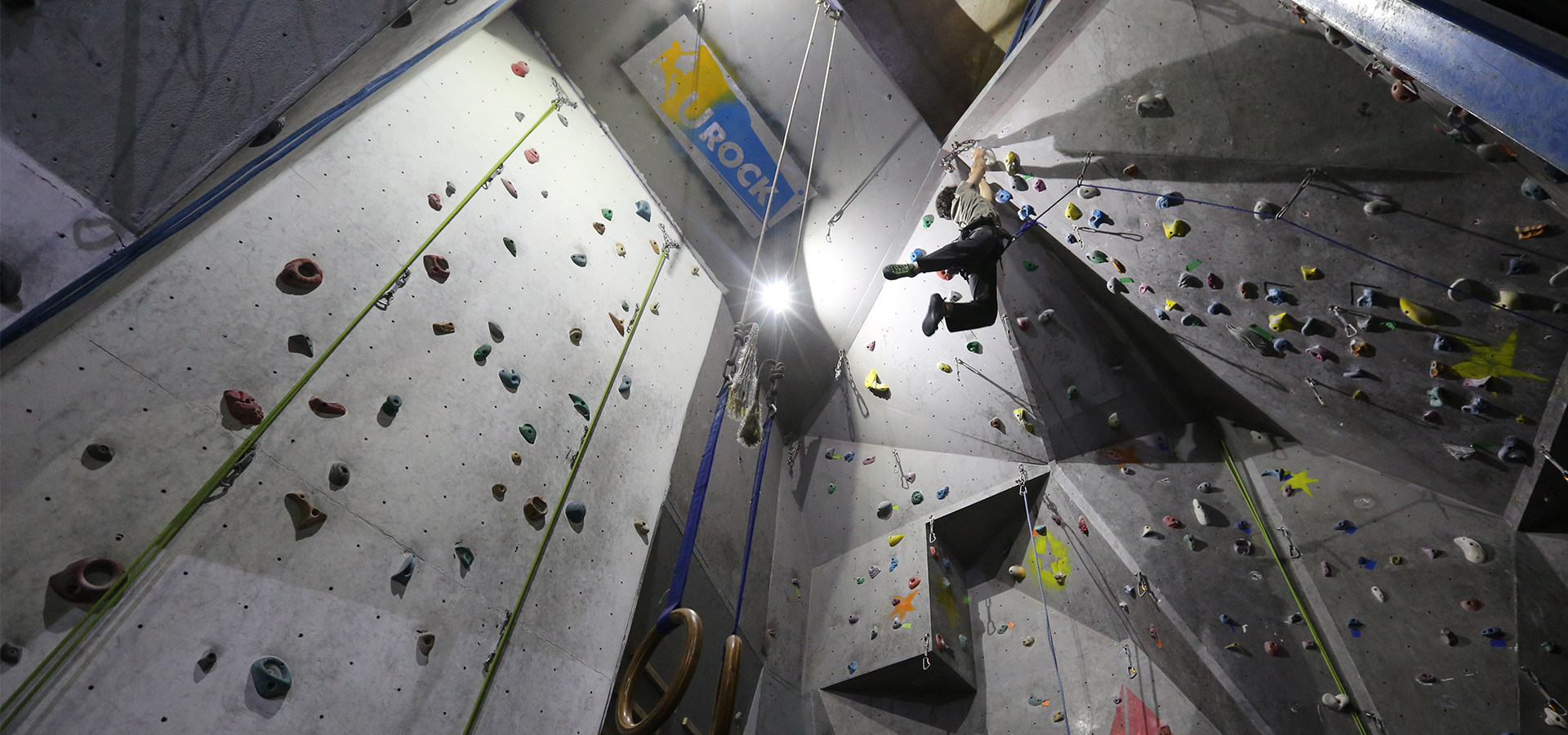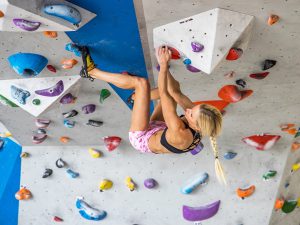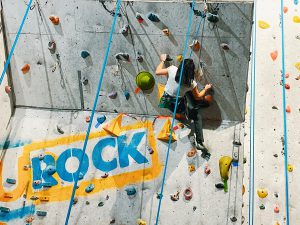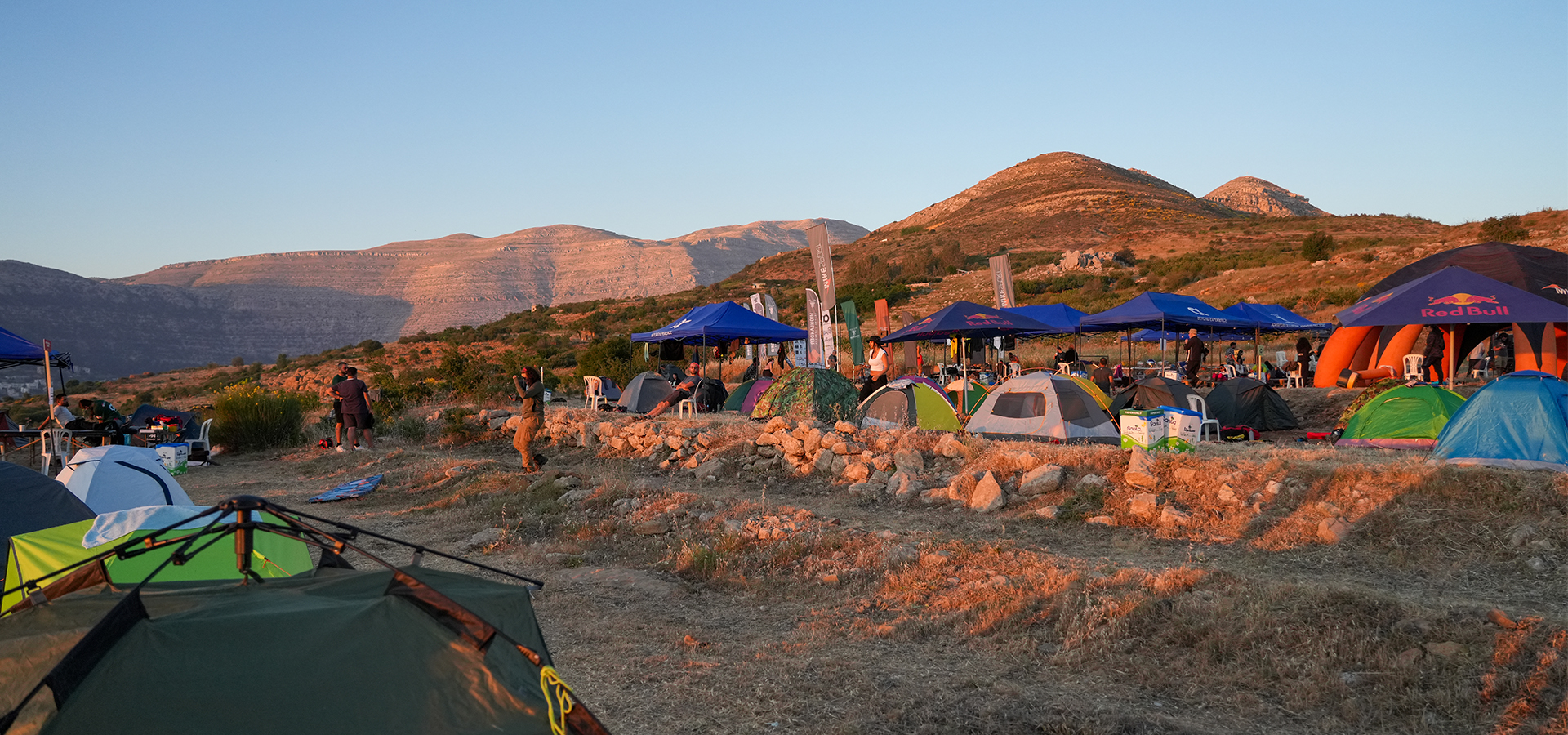
Sport Climbing at the Olympics? we will have to wait Tokyo 2020 -> Tokyo 2021
- April 12, 2020
- 0
Cover Photo: Charbel Bou Maroun Lead climb – U ROCK climbing gym
Sport Climbing discipline will make its Olympic debut in 2021, with athletes winning gold thanks to the power and strength in their fingertips.
Climbing time at the ‘greatest show on earth’ will, sadly, have to wait one more year after the postponement of the Tokyo 2020 Olympic and Paralympic Games.

Overview
Sport climbing takes the challenge of scaling steep ascents to a whole new level. Using a range of hand and foot holds of different shapes and sizes, climbers put their skills and strength into practice on a vertical wall. The wall may feature varying angles of either positive (known in climbing as a slab) or negative (steep, overhanging) sections.
This sport will feature three disciplines: Speed, Bouldering and Lead. Speed climbing pits two climbers against each other, both climbing a route on a 15m wall. In Bouldering, athletes scale a number of fixed routes on a 4.5m wall in a specified time. In Lead, athletes attempt to climb as high as possible on a wall measuring over 15m in height within a specified time. At the Games, each climber will compete in all three disciplines, and the final rankings will be determined by multiplying the placement in each discipline, with the athletes achieving the lowest scores winning medals.
In some disciplines, climbers attach safety ropes; however, no other equipment is permitted, and competitors must climb using only their bare hands and climbing shoes. The sport requires strength, flexibility and skill, together with careful advance planning: the first ever medalists will all possess this unique combination of physical and mental capability and decisiveness.
Disciplines
SPEED
The wall is a preset 15m route, with identical holds to the speed route used in every sport climbing World Cup and world championship event. Because every speed course is identical, it is possible for athletes to set world records.
Most climbers will ascend the route in under 10 seconds.
A false start results in immediate disqualification.
There are two identical routes adjacent to each other, and two climbers ascend the two routes simultaneously.
The current world records for men and women in the 15m speed climb:
Men: REZA ALIPOURSHENAZANDIFAR from Iran in 2017 (5.48 seconds)
Women: ARIES SUSANTI RAHAYU the spider-woman from Indonesia in 2019 (6.99 seconds)
BOULDERING
Climbers ascend 4m boulders without a harness.
There is a “zone hold” midway up each boulder. In addition to achieving credit for a “top” (i.e. reaching the top hold with control), athletes also receive credit for a “zone” (i.e. reaching the zone hold with control). Climbers are ranked according to their number of tops followed by their number of zones.
If tied, the climber with fewer attempts to top is ranked higher.
If still tied, the athlete with fewer attempts to zone wins the tiebreaker.
Climbers are not permitted to watch their competitors’ attempts.
There is a rest period equal to the climbing time between attempts.

LEAD
Climbers are attached to a harness and climb a 15m route, attaching their rope to pre-set bolt anchors via loops called quick-draws as they ascend.
Climbers are ranked according to the highest hold they reach on the route. In addition, if an athlete makes progress from one hold to another before falling, he/she receives a plus on his/her score. (E.g. if an athlete reaches hold #9, and has control and makes positive movement towards hold #10 before falling, he/she would receive 9+ for a lead score).
If tied, the climber to reach the score faster wins the tiebreaker.
Climbers have six minutes to complete the ascent and are allowed only a single attempt. It is typical that many climbers will fall midway through the six minutes, while it is possible that others will reach the top in under six minutes. In either scenario, the clock is reset and the next climber’s turn begins promptly.
Climbers are not permitted to watch their competitors’ attempts
There is a six-minute observation period before both qualifying and the final, when all climbers preview the walls at once.
There is an additional 40-second final observation period immediately before each climber’s attempt.

We will soon highlight the rules, regulations, event program, scoring and qualifying system of this new Olympic discipline.
Stay tuned











